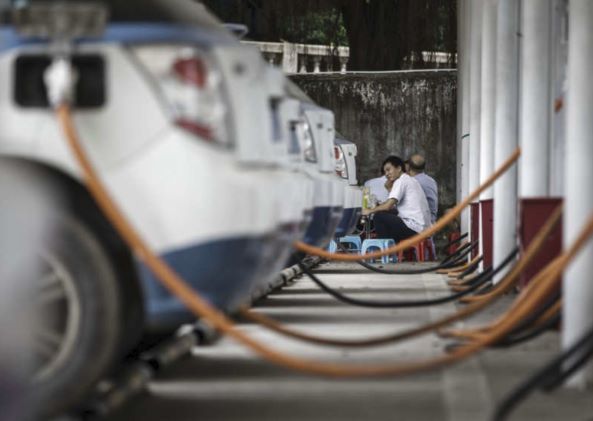

In a bid to further encourage Delhi locals to use more electric vehicles, South Delhi Municipal Corporation (SDMC) plans to develop at least 50 public charging stations by the end of this financial year. In another part of its environment-friendly initiatives, the corporation also plans to install rooftop solar panels at all schools and municipal buildings by 2019-end. The local municipality has close to 581 schools under it, where almost 250,000 students study.
Highlighting the green projects during the 4th Asia Pacific Forum on Urban Resilience and Adaptation — Resilient Cities Asia Pacific 2019, SDMC commissioner Puneet Goel said, “We have already introduced reforms in our department and replaced 75 diesel and petrol vehicles with e-vehicles to reduce carbon emission by 75,000 tonne per annum. The public e-charging stations will encourage general public to reduce pollution.” The corporation is now finalising sites for installing charging stations across south Delhi.
[related_post]
“We have installed rooftop solar panels of 9 MW capacity at 208 school buildings. It helps us generate 10 million solar units every year. Panels will be installed at other municipal buildings soon,” Goel added.
The three-day event, was organised in India for the first time, and was hosted by SDMC in association with United Nations (ICLEI — Local Governments for Sustainability). Representatives from 31 countries attended the event, which was inaugurated by vice-president M Venkaiah Naidu.
Read Also: Global Recycling Day: A look into India and The World
Vice president Naidu said the green solutions were required to overcome adverse impacts of climate change such as floods, cyclones and wildfires. “It is crucial to link every aspect of urbanization with sustainability and the urban infrastructure should be low-carbon, green and climate-resilient,” he added.
According to SDMC, the body has replaced conventional streetlights with 3 lakh energy-efficient LED lights, which saves 80 million units annually. It has also removed all conventional lights and fans from 581 municipal schools for energy-efficient ones. This according to SDMC has helped bring down the power bill by 25%. A similar project is being taken up in municipal buildings now.
The effort is laudable, as these, and other government owned infrastructure is really the low hanging fruit in the race to add renewable energy to the grid. The only challenge is likely to be execution as always, and one hopes the municipality will follow a model that works to deliver on its promises.
The corporation claimed to be taking similar steps to make energy out of municipal waste in its waste-to-energy (WTE) plant. The Municipal body plans to establish second plant at Tehkhand with a capacity of processing 1,200 tonne waste to produce 15 MW electricity every day. However, the plans for the WTE plants in Delhi and Mumbai have met with severe public criticism due to the poor performance of existing plants. While its composting drive is commendable, SDMC may need to tweak its plans about the new pollution causing power project and focus on a better waste management strategy for the national region.
In a significant move toward advancing green energy and industrial growth in the state, Himachal…
Golabl chemical conglomerate BASF has announced that its now offering the world’s first biomass-balanced polyethersulfone…
In a crucial stint to bolster the biogas sector and sustainable dairying in the country,…
TotalEnergies SE has received approval to proceed with its Middlebrook solar and battery project in…
Andhra Pradesh Chief Minister Chandrababu Naidu has inaugurated the Rs 1,000-crore green hydrogen plant of…
The BITS Pilani has developed an innovative solution for managing landfill leachate, domestic septage, and…